A new trend has emerged in the voting booth: people are saying yes to legal, recreational marijuana. Are there really any benefits of making this drug legal to adults? What will the consequences be, good or bad? It’s too early to tell, but in time we will see if there really are any pros of legalizing recreational marijuana or if it has all been a big mistake and a failed experiment.
Marijuana Is Just For Adults, Right?
Among the many concerns that critics of legalized recreational marijuana have, perhaps the most important is the safety and the health of children and teens.
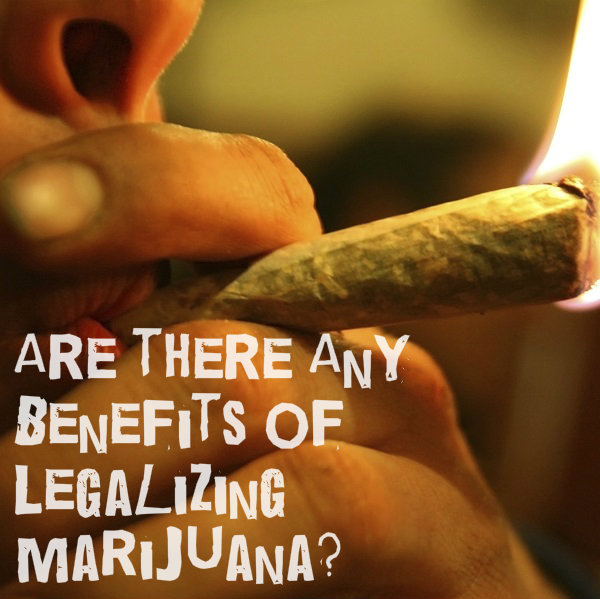 Proponents argue that there are age limits and that kids can’t get access to marijuana, but the same could be said of alcohol. And yet, underage drinking is more than common. In fact, alcohol is the number one substance of abuse among teens. Why? They can access alcohol more easily than drugs because alcohol is legal for adults. To think that kids won’t get their hands on pot is naïve.
Proponents argue that there are age limits and that kids can’t get access to marijuana, but the same could be said of alcohol. And yet, underage drinking is more than common. In fact, alcohol is the number one substance of abuse among teens. Why? They can access alcohol more easily than drugs because alcohol is legal for adults. To think that kids won’t get their hands on pot is naïve.
The safety of teens and kids is important because it will be compromised and is a major one of the many cons for recreational marijuana. Young people have vulnerable, developing brains, and marijuana is a mind-altering drug.
When teens smoke pot they throw a wrench in the works of that development. It has even been shown that smoking pot regularly can lower IQ and reduce academic achievement. Another important point is that most people who get addicted to marijuana started smoking when they were teens.
Public Safety Concerns Everyone
Another major point of contention in the discussion of the pros and cons of legalization of marijuana is the possibility of more accidents. Supporters of legal marijuana say that it isn’t as bad as alcohol when it comes to driving, but it is bad. You can’t drive high and expect to never have an accident. With more pot smokers on the road, more of us are likely to fall victim to a devastating traffic accident. States with legal marijuana have yet to determine how to set and accurately measure an intoxication level.
Are There Any Pros Of Legalizing Marijuana?
When you ask proponents of legal marijuana why they support it, you will mostly get half-hearted answers. Most supporters simply think there is no reason not to make it legal, if alcohol is legal. Others just want to be able to smoke legally and support recreational marijuana for personal and selfish reasons.
Perhaps the one pro that makes the most sense in the argument for legal recreational marijuana is for state revenue. Many states are operating in budget deficits and could use a new source of revenue to shore up their coffers. Whether or not marijuana is the answer to this particular problem remains to be seen. What we know for sure is that it is a big risk for some extra money.
Find Out Now How Changing Marijuana Laws May Impact Children
25 May 2015
Can You Get Sober And Stay Sober Alone?
You’re determined to get over your problem with addiction. You’ve had enough of the horrible way alcohol and/or drugs are making you feel and the damage you are constantly doing to the people you love. You have lost jobs, relationships and maybe your reputation because of your drinking and drugging. You might even have some health concerns caused by addiction.
People are encouraging you to go to a treatment center. You want to stop your self-destructive tendencies but you don’t want to go anywhere. You are sure that you can quit any time you want to and you’re just about ready to prove it. You don’t believe you need anybody to show you how. You just need to stop using alcohol and drugs.
Powerful Hold Of Addiction
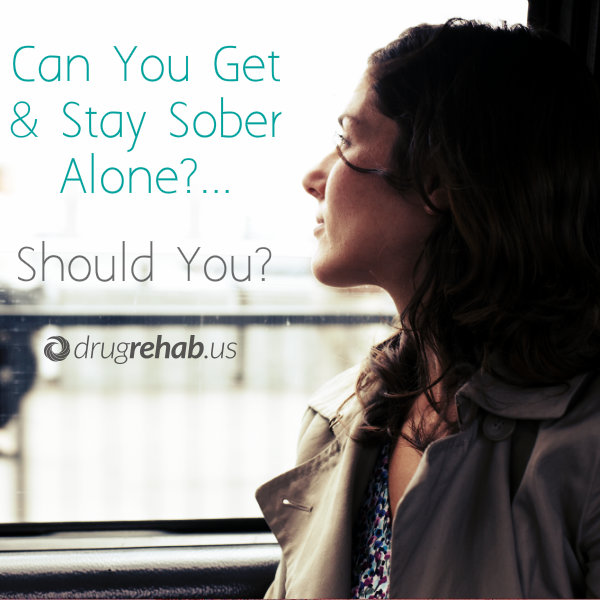 It’s the great delusion of almost every addict or alcoholic that he or she has the freedom to choose to quit. The truth is that once you are addicted, it’s highly unlikely that you will be able to discontinue using your drug of choice without help. Drugs and alcohol are physically and mentally addicting. Mind-altering substances create a compulsion to continue their use even when they are destroying you.
It’s the great delusion of almost every addict or alcoholic that he or she has the freedom to choose to quit. The truth is that once you are addicted, it’s highly unlikely that you will be able to discontinue using your drug of choice without help. Drugs and alcohol are physically and mentally addicting. Mind-altering substances create a compulsion to continue their use even when they are destroying you.
The reason you can’t quit has little to do with lack of willpower. Drugs cause chemical changes in the brain that lead to craving. You are compelled to keep repeating the experience of getting high even when all the important things and people in your life are slipping away. It’s true that you may be able to quit for short periods of time, but you can’t seem to stay stopped. You are compelled to keep returning to a life of active addiction.
Why You Should Ask For Help
Getting sober requires much more than simply making up your mind that you want to quit. Withdrawing from certain chemicals, including alcohol, can be dangerous and possibly even life-threatening, and should usually be done under medical supervision. Getting through withdrawal is only the beginning. Once you have safely detoxed from chemicals, you have to learn a whole new approach to life and you will need the help of others to do that.
Up to now you’ve been in the habit of running from problems and uncomfortable emotions. With the help of other people, you can learn to cope with the stressors of life without turning to chemicals.
Having the help of people who share their experiences of living a sober life with you will make your journey much easier than it will be if you try to figure everything out on your own. When you go to meetings and reach out to others in recovery, they can tell you the mistakes they have made along the way as well as the things they have learned that have worked.
Remaining Vigilant To Recovery
The best way to get sober is to have the help of others to get through detox and early sobriety. As time passes, it’s equally important to remain connected to others on an ongoing basis and to remain aware that there is always the possibility of relapse.
Even though you’ve broken the cycle of daily habitual use of your drug of choice, you may find that you suddenly experience the compulsion to pick up a drink or a drug after you’ve been sober a while, and this may happen when you least expect it.
Addiction can be compared with other relapsing diseases such as diabetes or heart disease. There is no graduation date and no point at which you are cured. You have to keep doing whatever it takes to stay sober, and that includes going to meetings and staying connected to other people.
Recovery from drugs and alcohol is definitely possible, and in most cases, successfully recovering on a long-term basis is done by surrounding yourself with other people who truly understand.
Your support network can include a sponsor, friends both inside and outside of recovery circles and possibly counselors or addiction professionals. Those who follow the 12 steps of recovery believe that there is strength in numbers and are aware that each of the 12 steps includes the words “we” or “us.” Together we can do what none of us can do alone.
Discover 5 Tips To Understand Addiction And Quit Unhealthy Habits!
A new study has investigated the widespread use of cell phones and smartphones in the U.S., leading many experts to suggest taking some time out of each day to disconnect in order to protect against the potentially addictive effects of technology use. The findings may be a little basic—focusing about as much on connection problems and telemarketing as potential markers of addiction—but they still serves as a wakeup call to the impact cell phones may be having on both American youth and adults.
So does the risk of Internet and technology addiction mean you might need to disconnect? The evidence seems to say so, but precisely defining these addictions is harder than it might seem.
Cell Phone Use And Time Staring At Screens
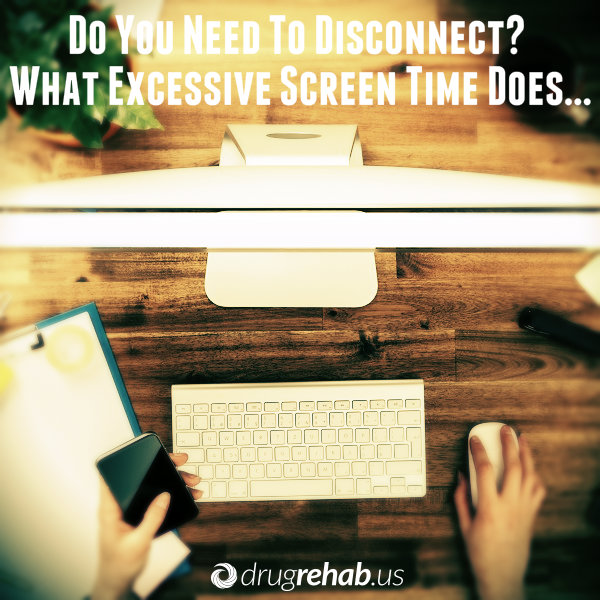 The most basic finding from the research is that 90 percent of American adults have a cell phone, and 58 percent have a smartphone. In addition to many more mundane findings, the results strongly hint at a problem with excessive smartphone use.
The most basic finding from the research is that 90 percent of American adults have a cell phone, and 58 percent have a smartphone. In addition to many more mundane findings, the results strongly hint at a problem with excessive smartphone use.
In particular, the survey revealed that 44 percent of cell phone owners have slept with their phones next to their beds so that they wouldn’t miss calls, texts or other updates through the night. Over two-thirds of cell phone owners check for messages or updates even if their phones don’t ring, sound a tone or vibrate, and about three in 10 say they couldn’t imagine living without their phones.
Americans spend an average of seven hours and 24 minutes staring at screens each day, and for 8- to 10-year-old children, the average is eight hours. Teens spend the most time looking at screens on average, reaching a huge 11 hours per day.
An Overstimulated State
The increasing use of cell phones has many direct impacts, relating to both being connected and spending so much time looking at screens. Constant checking of your cell phone can make it harder to fall asleep, keeping your brain in an anxious, overstimulated state. This same effect occurs when messages you send aren’t responded to quickly—you find yourself checking your phone and possibly worrying that your message didn’t come across as intended. Research suggests that staring at screens makes people less creative and less productive.
There are also more obvious consequences of excessive cell phone use, in particular spending less time socializing with people in real life or engaging in hobbies. Even when people do socialize, it’s becoming increasingly common for a group of people to sit staring at their screens while ignoring the people around them.
Technology And Internet Use As Addictions
Internet addiction has yet to be officially acknowledged as a condition by the Diagnostic and Statistical Manual of Mental Disorders (the DSM), but most experts—who are seeing increasing numbers of people seeking help for technology and Internet addictions—accept its existence. It might seem counterintuitive that an addiction can persist without a substance, but addiction really comes down to the effect something has on the brain, and other behavioral addictions such as gambling addiction have gained widespread acceptance because of these addiction-like effects on the brain.
Looking at the definition of addiction in a broad sense also reveals the striking similarities with excessive Internet and technology use. Addictions of any kind are characterized by an inability to control how often you engage in an activity, feeling urges or cravings to engage in the activity and continuing with it despite negative consequences.
Internet and technology addicts run into problems with work and school when they’re unable to stop surfing the Internet or using their devices. They may also jeopardize relationships and suffer withdrawal-like symptoms when they’re disconnected.
The similarities are hard to deny, but there are still some problems with classifying technology or Internet use as an addiction. First, the Internet (and technology used to access it) often serves as a method to access other addictive media, like pornography, online casinos or video games, so it’s hard to pin down whether somebody is addicted to the Internet or something else that’s accessed online. Additionally, it’s difficult to define just how much use is too much.
These problems are more technical than anything, however. Real-world examples of people ruining their lives over excessive Internet or technology use and being unable to stop speak volumes about the problem. Clearly, something unusual is going on.
Disconnecting To Protect Against The Risk
Internet and technology addiction are almost certainly real conditions, and we need to take the risks seriously because the vast majority of Americans now use Internet-equipped devices. Although full-blown technology or Internet addiction won’t affect most of us (like most addictions won’t), taking steps to guard against overuse is a prudent move. Many experts recommend simply disconnecting for an hour each day, preferably before bed, but doing so any time throughout the day is beneficial. There are apps designed to help you limit the time you spend on your smartphone.
There are many similar approaches available that are suitable for less severe cases, and many more professional counseling or rehab programs if you’re struggling with a more serious addiction. As we continue to spend more and more time online, thinking about the extent of our use and its consequences is becoming increasingly important.
Read Our Other Intriguing Posts On Internet Addiction
18 May 2015
The Growing Popularity Of Legal Marijuana
With Washington D.C. voting to legalize recreational marijuana, it feels like a tide is turning in the U.S. Now that our nation’s capital wants recreational pot, how long will it be before all states make a similar vote?
The federal government still maintains that the drug is illegal, but the cons of recreational marijuana legalization fall on many deaf ears as voters take to the ballot.
Voters in Washington, Colorado, Oregon and Alaska have all spoken and decided that pot should be legal for adults to use recreationally.
Why So Many People Believe In Legal Marijuana
 There were already several states allowing for legal medical marijuana when a handful of states decided to take it to the next level. To allow adults to use this mind-altering drug for no other reason than recreation is a concept that has been gaining ground in recent years. While many are debating the advantages and disadvantages of legalizing marijuana, millions of people have already made up their minds.
There were already several states allowing for legal medical marijuana when a handful of states decided to take it to the next level. To allow adults to use this mind-altering drug for no other reason than recreation is a concept that has been gaining ground in recent years. While many are debating the advantages and disadvantages of legalizing marijuana, millions of people have already made up their minds.
Some of the biggest reasons supporters of legal pot give for their position don’t hold much water. For instance, many proponents of legal marijuana simply state that if alcohol is legal, pot should be too.
These supporters claim that marijuana is not as bad for you as drinking and that it doesn’t impair people to the same extent that alcohol does. To use this reasoning is to ignore all the harm and damage that alcohol causes every year, from the thousands of car accidents to the millions spent on health care. The next most popular argument is to claim that cash-stretched states will get a new source of revenue. Whether this proves to be true or worth the risks remains to be seen.
The Overwhelming Negatives To Recreational Drugs
While it is possible to make a case for some benefits of legalizing pot, the negatives far outweigh them. Recreational drugs are never safe, even when the perception is that marijuana is harmless compared to other drugs.
Marijuana causes harmful side effects, long-term health problems, addiction, accidents and even damage to the developing brains of teens and young adults. Yes, legal marijuana is supposed to be restricted to adults, but so is alcohol. And yet, alcohol is the number one substance abused by teens. To think that teens won’t get increased access to pot when it is legal for adults is to be naïve. Research has shown that marijuana use in teens impairs memory, thinking skills and even lowers IQ.
Voters may continue to debate and discuss the pros and cons of legalizing marijuana, but anyone who sees the facts will quickly realize that legal pot is a bad idea. Public health will suffer if more people are getting high and trying to function. We will surely see more accidents, and most troubling of all, teens will suffer.
How Many People Use Medical Marijuana? – Find Out Now!
Prior to 2013, doctors in the U.S. diagnosed serious gambling problems under the heading of a condition called pathological gambling. However, in May of that year, the American Psychiatric Association eliminated the pathological gambling diagnosis and replaced it with a new, modified diagnosis called gambling disorder.
In a study published in 2014 in the journal Psychology of Addictive Behaviors, a team of American researchers compared the accuracy of the definition for pathological gambling to the accuracy of the definition for gambling disorder. These researchers concluded that the definition for the newer diagnosis has retained a high degree of accuracy in properly identifying affected individuals.
Pathological Gambling
The American Psychiatric Association (APA) included pathological gambling with a larger group of conditions called “impulse control disorders not elsewhere classified.” Other illnesses found in this category included pyromania, an anger control-related condition called intermittent explosive disorder, and kleptomania.
Pathological Gambling Symptoms
Doctors diagnosing pathological gambling looked for the presence of a minimum of five out of 10 potential symptoms. These symptoms included:
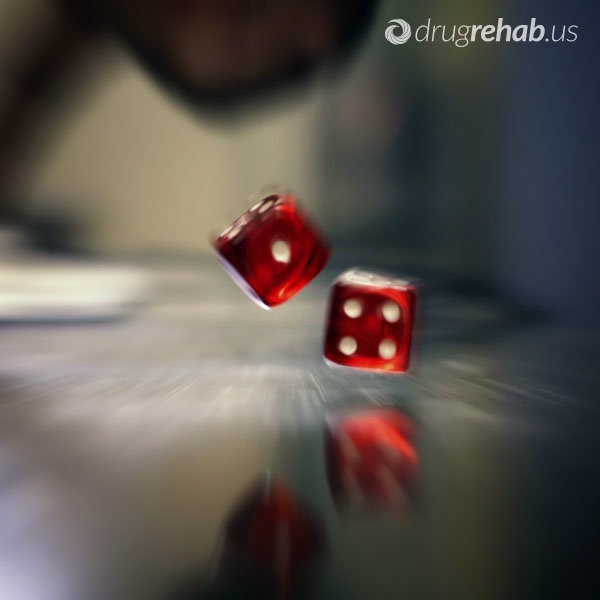 fixation with gambling while not actively involved in gambling,
fixation with gambling while not actively involved in gambling,- demonstrated inability to place limits on gambling participation,
- compulsion to engage in increasingly risky gambling situations, a
- reliance on gambling to cope with or avoid painful emotions or personal problems,
- returning to gambling rapidly after incurring substantial losses,
- concealing the extent of gambling involvement from others,
- relying on other people’s resources for gambling participation,
- gambling-related exposure to serious harm in personal or social relationships, and
- the onset of mental/psychological withdrawal when gambling participation stops or declines
The pathological gambling definition also included funding of gambling through illegal means as a potential symptom.
Gambling Disorder
In 2013, the APA simultaneously eliminated the pathological gambling diagnosis and placed the gambling disorder diagnosis in a new category of conditions called addictive disorders. These disorders are behavioral addictions that stem from problematic involvement in certain pleasurable, everyday activities rather than from the repeated, excessive use of drugs or alcohol. Gambling disorder is the only illness the APA has added to the addictive disorders category.
The definition for this condition largely resembles the previously used definition for pathological gambling. However, the American Psychiatric Association eliminated funding gambling through illegal means from the list of symptoms. In addition, the organization reduced the lower limit for diagnosing gambling disorder to four out of 10 symptoms, compared to the five out 11 symptoms limit used for diagnosing pathological gambling.
Has The Change Affected Accuracy?
In the study published in Psychology of Addictive Behaviors, researchers from the New York State Psychiatric Institute, the National Institutes of Health, and the University of Connecticut used information from a large-scale federal project called the National Epidemiologic Survey of Alcohol and Related Disorders (NESARC) to compare the accuracy of the symptom set used to define pathological gambling to the accuracy of the symptom set used to define gambling disorder. A total of 43,093 people were involved in this comparison. These individuals came from demographic backgrounds reflective of the national population. The researchers analyzed the gambling problems in this group as a whole and in each major demographic subgroup.
After completing their analysis, the researchers concluded that the new gambling disorder definition correctly identifies serious gambling problems in roughly 99 percent of those individuals who would have been diagnosed under the old pathological gambling definition. They also concluded that both definitions do an equally good job of identifying people not affected by serious gambling problems. These findings applied to the NESARC participants as a whole, as well as to all of the demographic subgroups found among the NESARC participants.
The study’s authors concluded that the switch from pathological gambling to gambling disorder and the associated elimination of funding gambling through illegal means as a potential symptom have had a minimal effect on doctors’ ability to accurately diagnose dysfunctional gambling behaviors. However, they also concluded that the lowered symptom requirement for gambling disorder will lead to an uptick in the number of people who receive a diagnosis. Still, despite this uptick, the overall number of people affected by diagnosable gambling problems will continue to be fairly small relative to the total population.
The Washington D.C. City Council earlier this year elected to cancel a special public hearing where marijuana legalization in the district was to be discussed. In doing so, it was heeding the advice of Dist. Atty. Karl A. Racine, who told council members they would be violating the law by publicly discussing a topic that had been ruled off-limits by Congress.
Marijuana legalization is now a huge issue in the nation’s capital, after the district’s citizens voted to lift some of the sanctions against the drug in last November’s election. D.C. voters overwhelmingly approved a ballot referendum called Initiative 71, which would decriminalize the possession of up to two ounces of marijuana. If allowed to go into effect, it would also allow D.C. residents to grow up to six marijuana plants at home for personal use.
Marijuana Legalization And Regulation Act Of 2015 Bill Shut Down From Public Exposure
For the dictates of Initiative 71 to become reality, the City Council would need to create a system to supervise, regulate and license all activities related to the cultivation, manufacture and legal sale of marijuana products within the Washington, D.C. area. And recently four council members introduced a bill called the Marijuana Legalization and Regulation Act of 2015, which would have set up a framework to do just that.
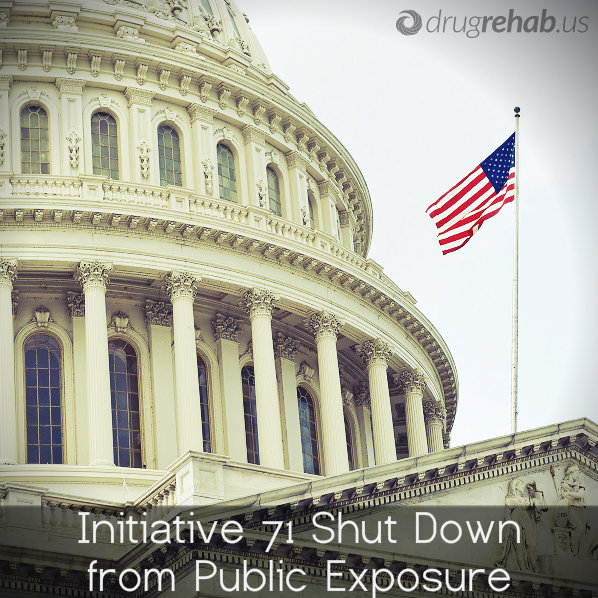 This was to be the subject of a hearing in February. But the council decided to take its discussion behind closed doors, where public exposure would be kept to a minimum.
This was to be the subject of a hearing in February. But the council decided to take its discussion behind closed doors, where public exposure would be kept to a minimum.
While states have the right to pass laws without federal government interference, elected officials in the District of Columbia must submit all such legislation to Congress for final approval. With both the House and Senate under the control of Republicans, who almost universally oppose drug legalization, it has been assumed from the beginning that D.C.’s attempt to change its marijuana laws would be vetoed—and that’s exactly what happened. When Congress passed its annual budget in December, a clause was included that prohibited taxpayer funds—either federal or local—from being used to implement any changes in drug laws.
The D.C. council members were fully aware of these restrictions when they planned this hearing and when their bill to create a manufacture-and-distribution network was first introduced. But they wanted to have a sensible and comprehensive action plan in place in the event that a new Congress with a more progressive attitude were to come into power.
But according to Racine, even discussing the issue could be interpreted as defying the will of the nation’s most powerful legislative body. He told the D.C. council members that their planned public discussion might violate another congressional edict called the Anti-Deficiency Act, which forbids lawmakers and bureaucrats in the district from spending tax funds on actions banned by the federal government. Sharing information and opinions in private meetings would be protected by the First Amendment, Racine declared, but pushing the legalization of marijuana even one step closer to reality would put council members squarely in the line of fire. Racine claimed they might be subject to fines or jail sentences if they went ahead with their original plan.
Racine’s opinion was not shared by D.C. council staff attorney V. David Zvenyach. He saw nothing in existing law that would prevent council members from planning for future contingencies. Given this backdrop, it is not surprising that several members of the council strongly disagreed with the decision to cancel the public hearing. Chalking the whole brouhaha up to unwanted congressional meddling, the members of this group were outraged by what they saw as intolerable interference in the affairs of an independent city.
Initiative 71 And The War On Drugs
Initiative 71 seems doomed to irrelevancy as long as Republicans maintain control of Congress—or as long as the Republican consensus remains hostile to any loosening of existing drug laws.
It is noteworthy, however, that Obama administration drug czar Michael Botticelli recently stated his opinion that Initiative 71 should be allowed to go into effect. This represents a change from the past, when Democrats and Republicans were united in their determination to continue the war on drugs without compromise. Winds of change are in the air, and while the immediate future of Initiative 71 doesn’t seem particularly bright, it is likely only a matter of time before the will of the people carries the day.
Find Out Why No States Should Be Legalizing Recreational Marijuana
07 May 2015
The Truth About Methadone
Methadone maintenance is a treatment strategy for heroin addiction that has been helping people for decades. Methadone, like heroin, is an opioid drug. As such, it can help addicts maintain sobriety from heroin without experiencing the devastating withdrawal symptoms that lead so many back to the drug. Many people misunderstand methadone and believe that it is just another form of drug addiction.
Learn the truth about this effective harm reduction strategy with these methadone myths and facts.
Methadone Myths And Truths
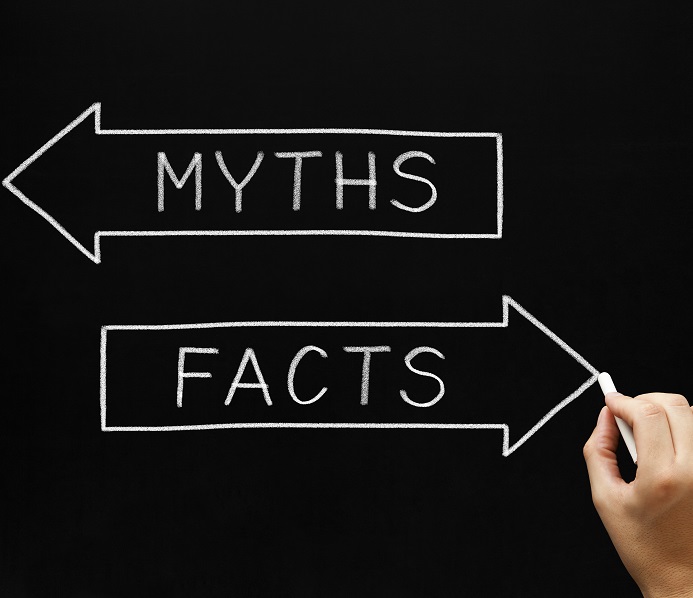 Myth: Methadone is just a substitute for heroin. Although it is also an opioid, methadone is not a substitute drug. It is a valid medical treatment for heroin addiction. What happens in detox from drugs, particularly from heroin, is withdrawal so terrible that few people can experience it without going back to using. For a drug as serious as heroin, withdrawal and cravings last for a long time. Methadone helps mitigate those symptoms so that addicts can resist the urge to go back to heroin.
Myth: Methadone is just a substitute for heroin. Although it is also an opioid, methadone is not a substitute drug. It is a valid medical treatment for heroin addiction. What happens in detox from drugs, particularly from heroin, is withdrawal so terrible that few people can experience it without going back to using. For a drug as serious as heroin, withdrawal and cravings last for a long time. Methadone helps mitigate those symptoms so that addicts can resist the urge to go back to heroin.
Myth: People using methadone are methadone addicts. Methadone maintenance is a medical treatment, and anyone going through this treatment is doing so under the direction of a doctor. Using methadone in this way does not simply mean that a person’s addiction is transferred from heroin to methadone. While it is accurate to say that a person in treatment is physically dependent on methadone, he is not addicted. He is not experiencing negative consequences from the fact that his body needs the methadone. This is the line between dependence and addiction and between methadone maintenance and heroin addiction.
Myth: Methadone makes you gain weight and rots your bones and teeth. Substance use and abuse cause a number of ill health effects, but the idea that methadone maintenance is bad for your health is not completely true. Methadone can cause dry mouth, which can increase the risk for tooth decay. Proper dental care mitigates this risk. An incorrect dosage can cause bone pain, but it does not cause bone decay. Finally, weight gain can occur with methadone maintenance, but only because getting off heroin means a return to a normal appetite.
Myth: Methadone causes sterility. This is absolutely untrue. It can sometimes lower testosterone in men, but this does not cause a man to be sterile. It can also be diagnosed and easily treated when it does occur.
Myth: Methadone cures heroin addiction. It would be nice if this were true, but in reality there is no cure for any type of addiction. Methadone maintenance is a medical treatment for heroin addiction. Success rates for opiate addiction treatments vary based on the individual, but methadone maintenance works well for many addicts. With this kind of medical treatment as well as therapy and support, many people are able to stay sober.
Methadone often gets a bad rap as a drug used to treat a drug addiction, but the truth is that it has been used for decades because it really does help people addicted to heroin.
Check Out Our Other Informative Addiction Medication Blogs
04 May 2015
New App Aims To Tackle Smartphone Addiction
The debate surrounding smartphone addiction is in many ways a sign of our times, but it also raises crucial questions about how we define addiction.
Are we addicted simply because we use our Internet-equipped cell phones a lot? Anybody familiar with addiction knows that it isn’t as simple as this, so the argument that our growing use of the devices represents a widespread addiction—while not necessarily wrong—oversimplifies the situation.
However, when you consider other behavioral addictions such as gambling—including the impact they have on the brain—it’s clear that smartphone addiction is a real condition. So how do we reduce our smartphone addiction? In this age where there seems to be an app for everything, it was only a matter of time before we encountered something like Instant, a new app that aims to tackle smartphone addiction.
Smartphone Addiction 101
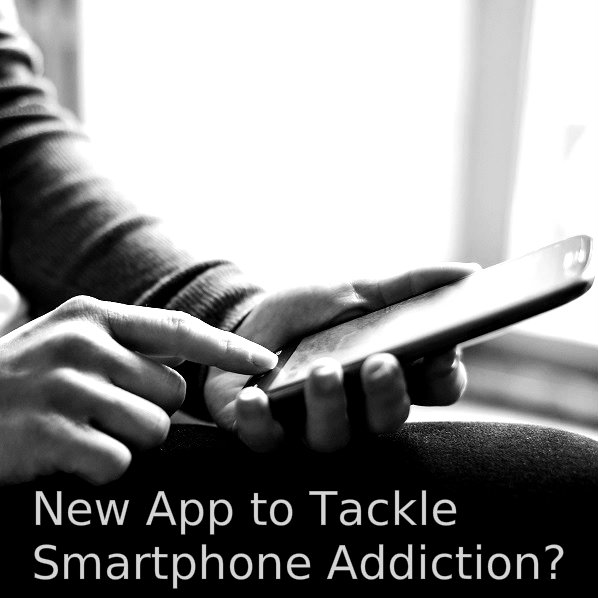 The definition of addiction is the key issue when discussing smartphone addiction, and despite the historical viewpoint that only substances could lead to addiction, behavioral addictions to things like gambling or sex have forced us to reexamine that way of looking at things.
The definition of addiction is the key issue when discussing smartphone addiction, and despite the historical viewpoint that only substances could lead to addiction, behavioral addictions to things like gambling or sex have forced us to reexamine that way of looking at things.
The reason relies on the neurochemistry of addiction: drugs are addictive because of the effect they have on natural brain chemicals such as dopamine. Other activities (like gambling or playing video games, for example) have a similar effect on these chemicals.
For smartphone addiction, it can also help to look at the situation in a more straightforward way. Addiction is characterized by tolerance (needing to do or take more of something to get the same effect), withdrawal (negative side effects when the substance or activity is stopped) and being unable to control the behavior despite negative consequences.
Signs Of Smartphone Addiction
Based on this, it’s clear that someone who has the following signs is potentially addicted to their phone:
- spends increasing amounts of time on his or her smartphone
- feels anxious or panicked when he or she is separated from it
- gets in trouble at work or school (or whose relationships suffer) due to smartphone use
Although only a small proportion of people are prone to full-blown addiction, as with alcohol, somebody who uses it too much could be considered a “problem” smartphone user.
Tracking Smartphone Usage In A Simple Format
Instant (available on Google Play for free and Blackberry World for 99 cents) is made by Indian startup Emberify and has fairly basic functionality. It records the number of times you unlock your phone and then keeps track of the amount of time the screen is left active. The accumulated data for each day is then displayed on a simple bar graph, making it easy to get the information you need at a glance. Other attempts at accomplishing the same thing, such as an app called Frequency, have focused on the time spent on specific apps, so Instant’s focus on overall smartphone-usage time makes it easier to digest what is effectively the same information.
According to company founder Shashwat Pradhan, “Instant works on the same principle of fitness trackers, with graphs and limit reminders.” The “limit reminders” basically allow you to set a limit on your daily usage and give you reminders of how much time you have remaining at user-designated intervals throughout the day. Pradhan has reduced his daily smartphone use from 120 to 50 minutes, which he attributes to an increased awareness of his usage habits.
New App, Instant Helps Problem Users, But What About True Addicts?
Instant is a promising development for more everyday users who’ve developed some problematic smartphone usage habits, but its stated goal of reducing smartphone addiction seems suspect. For a problem user, the regular reminders and daily limits indeed have the potential to promote awareness and thereby make it easier to say when enough is enough. This isn’t a trivial benefit—most people who use their smartphones too much will fall into this category, so it has the potential to avert growing issues for many of us.
The people Instant is highly unlikely to help are the addicts. To understand why, think about what the equivalent would be for substance users. It’s like saying to an alcoholic: you can drink five beers today, but no more, and I’ll give you reminders every few hours of how many drinks you’ve consumed. Would that defeat alcoholism? No! One of the hallmarks of addiction is attempting to limit yourself but being unable to do so. An alcoholic may have all the best intentions of drinking only five beers from a six pack, but the whole issue is that when that final beer is staring him or her in the face, best intentions are discarded and the remaining drink is cracked open.
Realistically, Instant is even more limited than the above example. For one, the limit is self-imposed, so individuals may not be strict enough in their goals. More importantly, the app is just that: a piece of software that you’re highly unlikely to feel like you have to answer to. You’ve gone over the limit? So what—nobody needs to know about it, and there is no punishment. Finally, as with all addictions, psychological support is a necessity to understand what drives the behavior and to teach the individual better ways to cope without it. Addicts struggle to get clean alone because addiction is a complex psychological issue that most people need professional support to effectively overcome.
Smartphone App Potentially Helpful, But Not For Everyone
There are many people whom Instant has the power to help, but sadly those who need it most will have inadequate support. Perhaps in the future, there will be a similar app incorporating psychological support with interactive lessons and coping tips that may actually help addicts. For now, Instant is a fantastic option for problematic smartphone users, but true addicts are still better off with traditional treatment approaches.
Find Out How Your Smartphone Obsession Is Bad For Your Health


